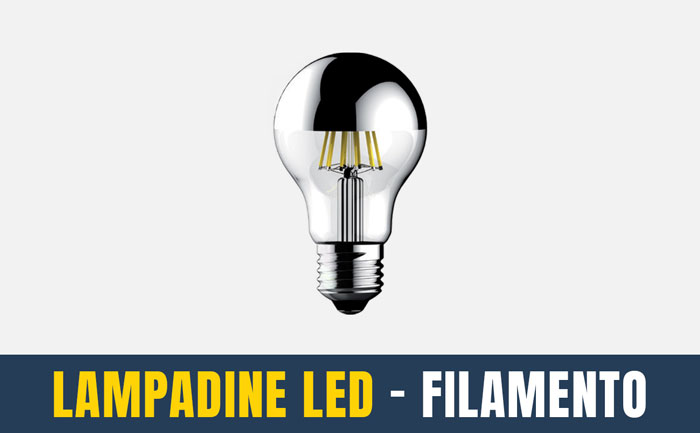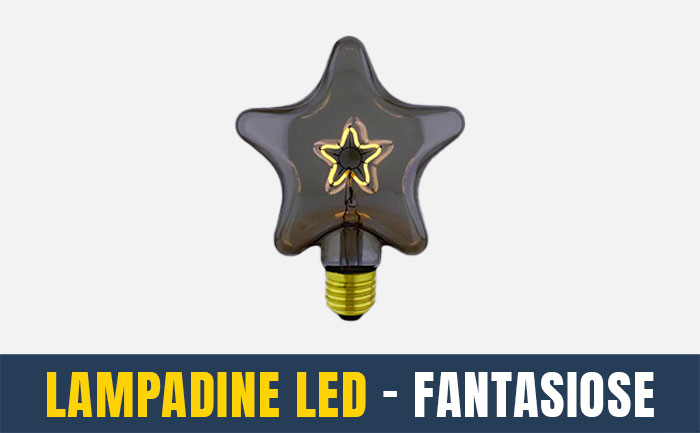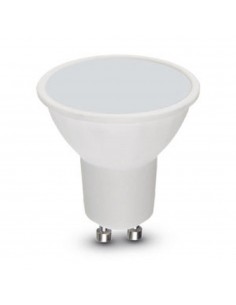- ELECTRICAL NEWS
- 0 likes
- 2330 views
- 0 comments

Why choose LED bulbs ?
Opting for LED bulbs proves to be a winning choice thanks to the numerous advantages they offer. These bulbs, in fact, are ecological, long-lasting, customizable and convenient from an economic point of view .
✔️ Energy saving
One of the major advantages of LED bulbs lies in energy saving: for the same luminous flux emitted, keeping an LED bulb on for an hour is equivalent, from a consumption point of view, to keeping an incandescent bulb on for four hours. It is estimated that an average family can reduce annual lighting consumption from 250 kWh to 60 kWh simply by choosing LED bulbs.
✔️ Durability over time
LED bulbs are designed to last much longer than traditional bulbs. They have a life cycle twenty times longer than that of traditional light bulbs and twice that of energy saving light bulbs.
✔️ Customization
LED bulbs offer a wide range of customization possibilities. You will be able to choose the shade of light (warm, cold, neutral or multicolour) and the angle of the light beam, opting for directional or non-directional bulbs, depending on the needs of the environment in which the bulb is positioned.
✔️ Environmental impact and safety
LED technology is environmentally friendly and safe. LED bulbs are 95% recyclable, free of toxic substances and do not emit magnetic fields, ultraviolet rays or infrared radiation. Furthermore, they do not use harmful gases or filaments and are not dangerous in case of direct contact as they do not develop much heat.
✔️ Performance
The LED bulbs light up instantly and are suitable for both indoor and outdoor use. They are resistant to stress and cold and withstand many on and off cycles.
Replace old bulbs with LED lights: starting from the socket
The first step to take when you decide to change the lighting by switching to LEDs is to check the type of connection and then insert the bulb into the lamp holder. Whether it is an old spotlight or a bulb or candle lamp, replacement presents no difficulty. In fact, LED technology is available in all existing sockets of incandescent, halogen and energy saving bulbs. The only precaution to take is to choose the socket corresponding to the bulb you want to replace.
Types of socket for LED bulbs
To make an adequate choice, it is important to distinguish between the different types of attack:
-
E27 (large connection)
Known as the "large socket", the E27 takes its name from the large, stubby 27mm screw and is the most commonly used lamp holder.
-
E14 (small connection)
The E14, or "small socket", is the typical one for candle-shaped bulbs, characterized by a 14 mm screw.
-
GU10, GU4 and GU5.3 (bayonet)
These are the most popular attachments for spotlights. The GU10 is essentially used in spotlights and recessed ones without a transformer (220-240 V), while the GU5.3 is used with spotlights (including recessed ones) equipped with a transformer (12 V). G4 sockets are instead used in small power spotlights (12 V).
-
R7S
R7S socket bulbs, available in two lengths (78 or 118 millimetres), are generally used for floor lamps and outdoor projectors.
-
The neon tubes
As for the neon tubes, the T8 tubes have a diameter of 28 millimeters and a G13 connection, while the T5 tubes have a diameter of 16 millimeters and a G5 connection.

The Color of the LED Light: Warm, Cold, Neutral or Multicolor
LED bulbs can come in different shades: warm, cold, neutral, colored and iridescent (RGB Multicolour). There are also LED bulbs that combine all shades of light (CCT Color Changing Temperature). The color tone of the light emitted by LED bulbs is measured in degrees Kelvin (K), and their value will tell you whether the light emitted will be warmer or cooler.
LED Light Shades
You can choose between different shades of light for your LED bulbs:
-
Hot light
The color shades for warm light range from yellow, red, orange and warm white. Ideal for the kitchen, living room, sleeping area and offices, these bulbs have a color temperature of less than 3,300 K, with the most common type at 2,700 K.
-
Cold light
For a cool effect, LED bulbs feature shades from cool white to light blue and blue. With a temperature above 5,300 Kelvin, these bulbs are suitable for outdoor spaces, large surfaces such as warehouses and supermarkets, and contemporary environments.
-
Neutral Light
The neutral light offers a very uniform shade of white, ideal for environments intended for relaxation. To achieve this effect, you need to choose a bulb with values between 3,300 and 5,300 K.
-
RGB Multicolor
Multicolor RGB technology allows these bulbs to vary the color thanks to the switching on and off of the individual red, blue and green LEDs.
-
CCT (Color Changing Temperature)
LED bulbs with CCT technology incorporate all shades of light (warm, cold and neutral), which can be adjusted with a remote control.

LED Light Direction
Not only the shade, but also the direction of the light is important. A light source that illuminates from top to bottom is ideal in the kitchen and in conviviality spaces, while one that illuminates from bottom to top is preferable to avoid shadow areas or glare.
Choosing the shape of LED bulbs
Replacing an old light bulb with an LED one requires a careful choice regarding its shape. This decision should be based on the type of chandelier in which the light source will be inserted. For example, the globe shape of LED bulbs pairs perfectly with pendant chandeliers, typical of kitchens or dining rooms. In the presence of spotlights or wall lamps, however, it is important to consider the size of the bulb.
LED bulbs and the wide range of shapes available
The range of LED bulb shapes available on the market is wide and able to satisfy different aesthetic needs. Among these, the most popular are LED bulbs with classic, filament, spotlight, vintage and fanciful shapes .
LED bulbs with classic shapes
For those who prefer a sober and timeless style, LED bulbs with classic shapes are ideal. These can take the shape of a drop, a sphere, a candle, a twist and a gust of wind.

Filament LED bulbs
Filament LED bulbs have a vintage look and create a diffused light within the environment thanks to the presence of two or four filaments positioned vertically.

LED spotlight bulbs
For spotlights, R50, R63 and R80 LED bulbs can have a mushroom shape or a shape that recalls that of reflectors, while the PAR30 and PAR38 ground recessed spotlights are larger in size and suitable for outdoor environments.

Vintage LED bulbs
Vintage LED bulbs, with their retro style, are perfect for a decorative application. An excellent choice in this case could be pear-shaped bulbs.

LED bulbs with imaginative shapes
For a modern style or to add a touch of freshness to a dated environment, LED bulbs in imaginative shapes, such as heart or star shapes, are an excellent choice.

Diffusion angle of light bulbs: what it is and how to choose it
The angle of diffusion of the bulbs measures the radius of light emission. It is important to evaluate this feature based on the type of light you want to obtain and the type of fixture in which you will insert the bulb.
Choice of bulb diffusion angle
There are several options you can choose from based on your lighting needs. Here are the main ones:
- Bulbs with a beam angle of up to 36° : Bulbs with a beam angle of up to 36 degrees are ideal for directional light. They are suitable for spotlights, desk lamps and other directional LED lamps.
- Bulbs with a diffusion angle between 150° and 300° : Bulbs with an emission radius of 150-300 degrees are preferable in chandeliers with a diffuser that covers the bulb. These are ideal for free-standing lamps and for ceiling mounting facing downwards. They allow you to concentrate LED lighting in the room without wasting light towards the ceiling.
- Bulbs with a 360° beam angle : Bulbs with a 360 degree beam angle are the perfect choice for pendant chandeliers. Their diffusion angle allows the room to be illuminated in its entirety, avoiding the creation of shadow areas.
How much light does an LED bulb produce?
In the past, the amount of light produced by a light bulb was measured in Watts. However, with the advent of LED lighting, the reference for quantifying the amount of light emitted by a bulb has changed.
Lumen: The measurement of the brightness of LED bulbs
Now, instead of Watts, we need to consider lumens, or luminous flux, to estimate the quantity of light emitted by a bulb. The lumen (lm) is in fact the unit of measurement of brightness: the higher the number of lumens, the brighter the bulb will be. Watts, on the other hand, represent the unit of measurement of electricity consumption
Brightness of an LED Bulb Vs Incandescent Bulb
Let's take an old 100 Watt incandescent light bulb for example: it produces approximately 1,500 lumens. Instead, an LED bulb can produce the same amount of light with just 15 Watts. This makes LED bulbs significantly more efficient in terms of energy consumption.
Understanding the light output of an LED bulb
Therefore, to understand how much light an LED bulb can produce, the key lies not in the unit of measurement of energy consumption (Watt), but in the lumens, which precisely indicate the luminous flux emitted.
The light power of an LED bulb
Specifically, if we are looking for an LED bulb capable of producing the same amount of light as an old 100 Watt incandescent bulb, we do not have to worry about its power in terms of Watts, but we must look for an LED bulb capable of producing all 'approximately 1,500 lumens.
Filament or matte LED bulbs: What are the differences?
LED bulbs are an increasingly popular choice in the world of lighting. This type of bulb stands out for its ability to offer intense, long-lasting and aesthetically pleasing light, but there are actually different types of LED bulbs, especially the filament and opaque versions.
✔️ Opaque bulbs: main features
In traditional opaque light bulbs, the LEDs are arranged on a plane and emit light in only one direction. This generates a unidirectional light beam, which can be ideal for creating focused lighting in specific areas of the room.
✔️ Filament LED bulbs: advantages and peculiarities
In contrast, in filament LED bulbs, the outside of the bulb is transparent and the LEDs are arranged on a wire. In this case, the LED light is emitted homogeneously in the room, offering a more balanced and diffused light distribution. Looking at these bulbs, the light they emit is reminiscent of old incandescent bulbs, warm and soft.
✔️ The choice between matte and filament LED bulbs
The choice between opaque or filament LED bulbs is therefore a predominantly aesthetic question. Both types offer the same amount of light, varying only in the uniformity with which it is emitted. However, it is important to remember that the final performance of the LED will be significantly influenced by the quality of the bulb and the context of use.
Discover the latest generation LED bulbs
LED technology is a world constantly aiming for new goals, as demonstrated by the latest generation LED bulbs. These innovative products offer the possibility of personalizing the lighting and creating unique atmospheres, from bright warmth to soft intimate, depending on your mood and needs. Let's explore some of the most revolutionary LED lighting solutions.
Dimmable LED bulbs
Dimmable LED bulbs adapt perfectly to any environment . Used with dimmers, these bulbs allow you to create suggestive luminous atmospheres or highlight specific decorative elements. The light intensity of the LED lamp can be modulated from zero to 100% thanks to a dimmer or light dimmer installed on the same switch. Among the main advantages of these bulbs, the optimization of consumption and the living comfort given by the possibility of quickly alternating between different brightnesses stand out.
Smart light bulbs
Smart light bulbs represent the future of lighting and the bridge that connects you to the simplest and most immediate home automation. Controlled via app on your smartphone or tablet and compatible with voice assistants, these bulbs allow you to manage switching on and off and adjust brightness levels wherever you are. They recall the presence of a classic LED bulb, but hide a small Wi-Fi module that allows the lights to connect to the home network and be controlled remotely, making the switch an obsolete memory.
If you want to transform the lighting in your home and bring it into the future, the latest generation LED bulbs may be the right choice for you.
Correct disposal of LED bulbs
After prolonged use, you may wonder: where do you throw LED bulbs? It is important to remember that, although these bulbs are free of substances harmful to human health, they should never be discarded together with unsorted waste. While you might think about throwing them into glass bell jars, like halogen and incandescent bulbs, this is not the correct procedure.
LED bulbs as special waste
LED bulbs are considered special waste. They fall into the category of WEEE (waste from electrical and electronic equipment) and must be disposed of in compliance with current legislation. On the light bulb packages, you will find the crossed-out wheelie bin symbol which indicates the need for separate disposal of the product.
How to dispose of LED bulbs ♻️
You can choose to take your used bulbs to a point of sale or authorized collection centers.
Delivery of LED bulbs to points of sale
If you opt for the first solution, you will be able to give your old light bulb to the seller. In some stores, however, you may be required to purchase a new product to give up a non-functioning bulb.
Collection of LED bulbs in authorized centers
If, however, you choose to leave your light bulbs at an authorized collection center, just take them to the recycling center closest to you. These centers are required to collect the bulbs and then send them to an appropriate disposal or recycling process.
By choosing LED lighting, you are making a sustainable choice and helping to protect the environment with a small but significant gesture.
The technology and quality of LED bulbs
The LED bulb offers numerous benefits, including lower energy consumption, increased safety, little or no maintenance costs, and long life. In fact, an LED bulb is generally designed to exceed 20,000 hours of operation. Therefore, the quality of LED bulbs is one of the main selling points of these lighting products.
Evaluation criteria for the quality of LED bulbs
There are various aspects to take into consideration when purchasing an LED light bulb. The energy class, clearly indicated on the packaging and essential on the energy label, is an indicator of the energy efficiency of LED bulbs. Note that the new 2021 European regulation evaluates energy performance using letters from A (very efficient) to G (not very efficient).
Luminous efficiency and light color
In addition to the energy class, it is essential to consider the luminous efficiency, expressed by the lumen/Watt ratio. For example, if an LED bulb produces more than 100 lumens/Watt it means that it is particularly efficient. Other important parameters are the type of light emitted, the color temperature, the light output and the color rendering index, which indicates how natural the illuminated objects appear under the LED light.
The additional benefits of LED bulbs
LED bulbs are also preferred for other reasons. These bulbs are easily replaceable with traditional bulbs, they immediately reach maximum light output, they resist well even at very low temperatures, and are therefore ideal for outdoor use. Furthermore, LED bulbs offer the possibility of varying the color and temperature of the light, as well as offering elegant and modern designs.



















Comments (0)